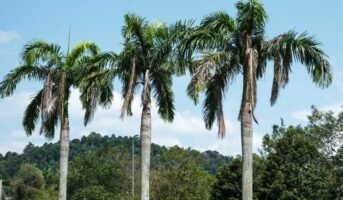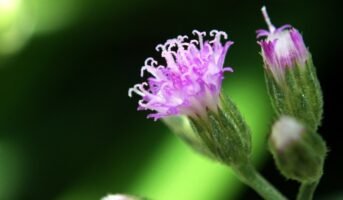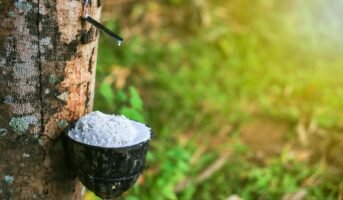The herbaceous plant Celosia argentea, sometimes called the plumed cockscomb or silver cock’s comb, is native to the tropics and is distinguished by its very vivid hues. A sensitive annual that is frequently planted in gardens, it blooms from mid-spring until summer. The seeds of the plant are quite tiny. About 1,000 seeds weigh up to 6.5 grams. Read on to learn more about the benefits, uses, and physical features of Celosia Argentea as well as tips for growing and caring for it.

Source: Pinterest
Celosia Argentea: Key facts
| Botanical name | Celosia Argentea |
| Type | A small shrub |
| Flower | No |
| Also known as | Plumed cockscomb, silver cock’s comb |
| Height | 4-5 m tall |
| Season | Spring |
| Sun exposure | Partial shade with a few hours of direct sunlight |
| Ideal temperature | 70 and 90 degree Fahrenheit |
| Soil type | Well-drained |
| Soil pH | Slightly acidic to slightly alkaline |
| Basic requirements | Intermittent watering, indirect sunlight, home-made fertiliser |
| Ideal location for placement | Outdoors |
| Maintenance level | Low |
Celosia Argentea: Physical features
A cultivar of Celosia Argentea called “Flamingo Feathers” has a height limit of two feet. The leaves are a deeper green than those of other varieties, and the hues range mostly from pink to light violet.
The Century varieties are often brilliant red, yellow, orange, or pink and stand between one and two feet tall. Although comparable to the Century varieties, the Kimono cultivars are often smaller (4 inches to 1 foot) and have more subdued colours. There are several more hues available, like white, burgundy, orange-red, etc. Some kinds can reach heights of 3–4 feet.

Source: Pinterest
Celosia Argentea: Common names
Three common names for different flower types of Celosia Argentea are:
- Plume Celosia: It has soft feathery flowers in orange, red, yellow, magenta, and pink.
- Cockscomb Celosia: It has crests of wrinkled-looking blooms in red, yellow, pink, orange, magenta, and bicolors.
- Wheat celosia: As the name suggests, it slightly resembles wheat. It flowers in shades of red-purple or pink and with the right growing conditions, it often self-sows.
How to grow Celosia Argentea from seeds?
Starting Celosia Argentea plants from seeds gives more sizes, shapes, and colours. To grow these plants from seeds, keep the following tips in mind:
- Grow them in full sun and make sure they get at least 6 to 8 hours of sunlight each day.
- Grow these plants in well-drained, nutrient-rich soil to ensure strong growth.
- Every couple of weeks, give them liquid plant food, especially if it’s been really hot or rainy.
- Stake taller varieties with heavy blooms as they grow.
Celosia Argentea in Ayurveda
Referred to as Kurdu, Celosia Argentea is deemed quite beneficial in ayurveda. Its leaves are reported to possess strong antibacterial, anti-metastatic, anti-inflammatory, anti-diabetic, anti-diarrhoeal, wound healing, and anti-microbial properties. Its seeds contain saponin of Hyaluronic acid. These seeds serve as aphrodisiac, spasmolytic, astringent, cooling and nutritive. Various parts of this plant are used in a number of Ayurvedic remedies for several health issues.
Celosia Argentea: Medicinal uses
- Among the ailments the plants are used to treat are leucorrhea, dysentery, diarrhoea, bloody stool, haemorrhoids, and uterine bleeding. In India, the seeds are frequently used to treat Diabetes mellitus.
- It works well as a parasiticide against Trichomonas; a 20% extract can make the parasites vanish in 15 minutes.
- The seed is ophthalmic and hypotensive. It is used to treat bloodshot eyes, blurred vision, cataracts, and hypertension.
- However, because it dilates the pupil, it should not be taken by those who have glaucoma.
FAQs
What is the ideal temperature for the growth of Celosia argentea?
The plants should be maintained at a temperature of 18-24°C.
Is it easy to grow Celosia argentea?
Yes, it is an easy-to-grow plant. It enjoys full sunlight and rich, moist, well-drained soil, though it can endure short periods of poor, dry soil.
Housing News Desk is the news desk of leading online real estate portal, Housing.com. Housing News Desk focuses on a variety of topics such as real estate laws, taxes, current news, property trends, home loans, rentals, décor, green homes, home improvement, etc. The main objective of the news desk, is to cover the real estate sector from the perspective of providing information that is useful to the end-user.
Facebook: https://www.facebook.com/housing.com/
Twitter: https://twitter.com/Housing
Email: [email protected]











